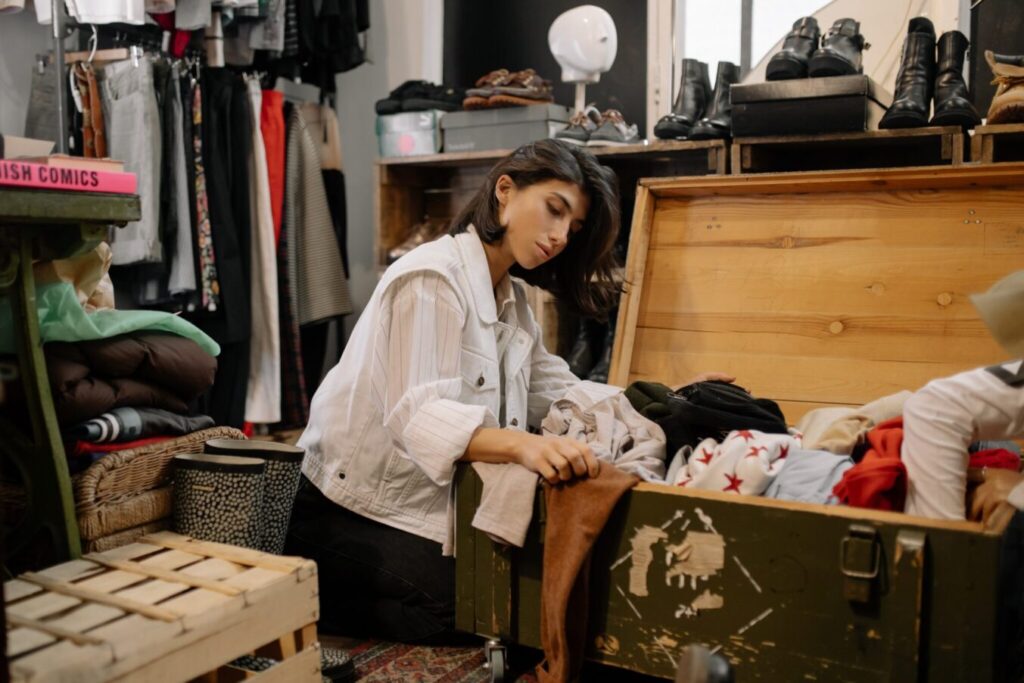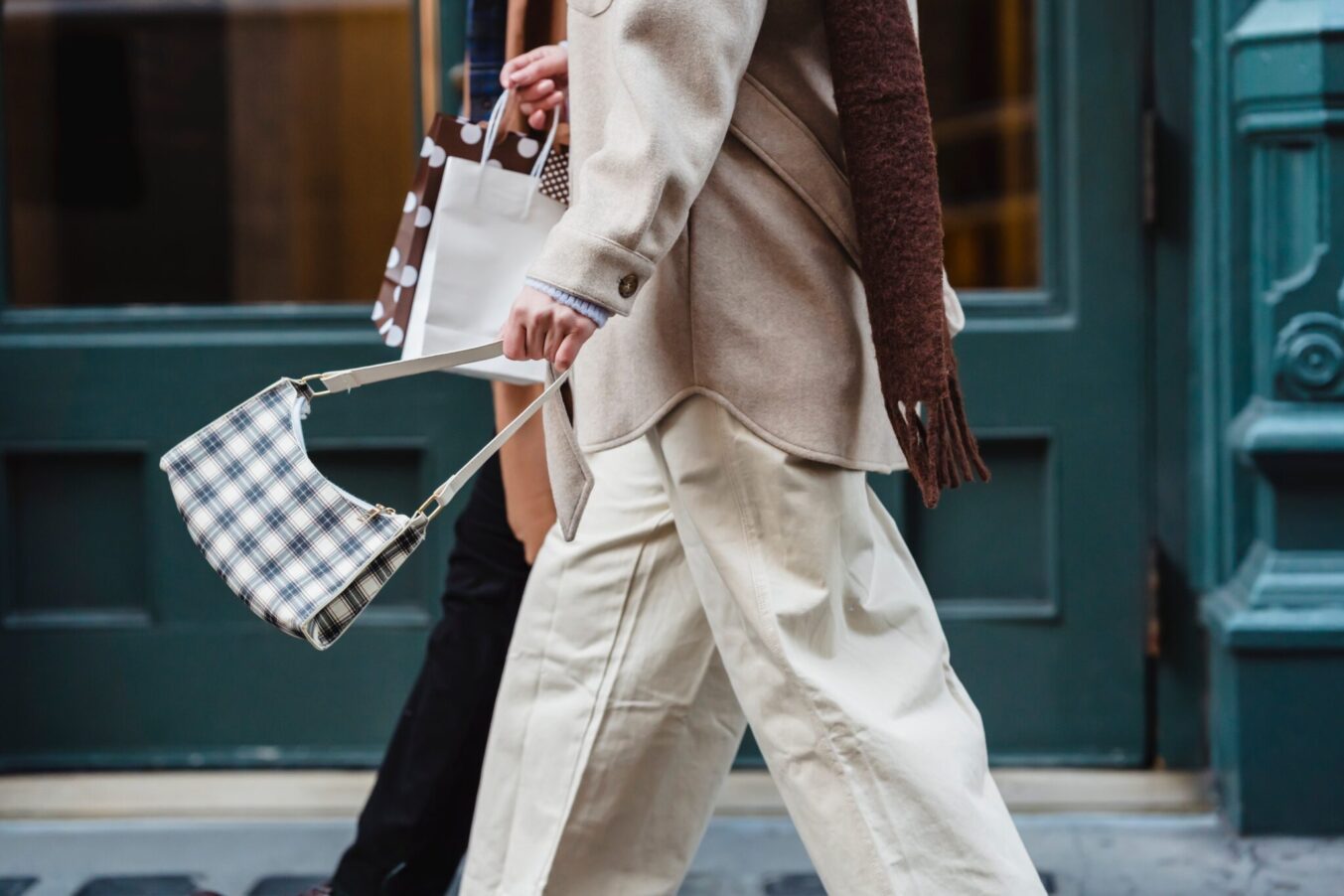The average woman has 103 things in her closet, of which only 10% are worn. With these statistics in mind, it makes perfect sense that the heroic, periodic Closet Clean Out swoops in to save the day. We often leave our clean outs with two piles: keep and donate.
Donating and other acts of charity activate our brain’s pleasure circuits. We get that intangible “inner glow”, a sense of agency or the approval of others for our altruistic deeds.
While donating is incredibly generous, supports those in need, and extends the lifecycle of our clothing, it’s not always as sustainable as we think. By understanding the clothing resale market, as well as how to shop secondhand first, we can even better for both our wardrobes and the planet.

Why do we love to purge?
We have gained a lust for minimalism, today more than ever. We’ve been taught to keep only the things that “spark joy”, doing away with cluttered wardrobes in favor or sleek Pinterest-worthy shelves. Especially at the height of the pandemic, with extra time at home to reevaluate our possessions, 2020 became known as “The Great Decluttering”.
As someone who guides people through these “purges”, I’ve chosen to forego the phrase cleanout in favor of curation. Curation is defined as the action or process of selecting, organizing, and looking after the items in a collection or exhibition. If we treat our clothing with the esteem a museum exhibition warrants, we’ll find ourselves with only the pieces we love to wear.
The Donation Dilemma
Great for our ego, and for the planet. It is irrefutably true that donating your clothing is better than tossing it. That said, the amount of donations a Salvation Army receives severely outweigh what they can sell. A whopping 84% of our clothing still ends up in landfills and incinerators.

Choose resale instead
The resale economy is poised to total $77billion in the next 5 years, and that’s cause for celebration. This also means that despite a booming, perhaps crowded, market, no two resale platforms are quite the same.
They reach varying audiences, with varying aesthetics, and even more varied budgets. For a seller, the wild west of resale also carries considerations– ease of navigation, level of effort to list, and commission structures. Research seller reviews and the brands sold on each platform to understand which one will best match the stuff in your curation pile.
And as you’re identifying which items to part ways with, rethink your piles. Instead of simply keep and donate, sort them based on where they have resale value, from most to least:
- Luxury: Tradesy, Vestiaire, My Wardrobe HQ, Sellier, Cudoni
- Trendy and High Street: Ebay, Depop, Hardly Ever Worn It, Vinted
- The Not Quite Sellable Stuff: Swopped, Swishing, clothing swaps on Eventbrite, charities that want a specific type of gently-used clothes like coat drives or prom dresses.
- Worn or damaged goods: Look up your area’s local textile recycling center, or convert the garment into rags for use around the house.
Now before consigning, let’s enter the realist room. Prepare yourself to potentially receive a slightly lower return than what the market calls for. Two thousand years ago Aristotle wrote, “What belongs to us, and what we give away, always seems very precious to us.” We’re programmed to think this way. In a study conducted by psychologist Jean Piaget, children exhibited an extreme preference for the things they already owned, even when presented with carbon copies.
My rule of thumb: even a few pounds is better than zero pounds, especially with the guarantee of an item going to a new home over landfill.
Okay, I curated! Now how do I build a sustainable wardrobe?
The most sustainable clothes are the ones you already own. But shopping your own closet doesn’t always scratch the retail therapy itch. Which is why the second most sustainable option is secondhand.
While thrift hauls and rare vintage finds go viral on social media today, people have been shopping secondhand for nearly as long as the fashion industry has existed. With the secondhand industry so massive, there’s virtually no excuse to buy new. It’s more sustainable, more affordable, and allows you to be more experimental with your style. The next time you add to cart, pause and search on any of the sites above for a similar, if not identical item. The slower pace will save you money and create more intentional consumption habits.
You’re now prepared to foray into the world of resale, whether as a seller, a shopper, or both. The planet thanks you, and so will your wardrobe.



